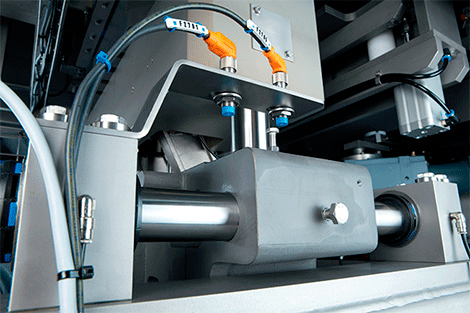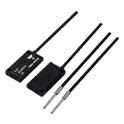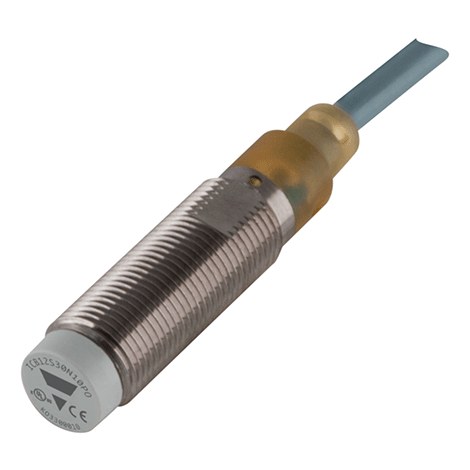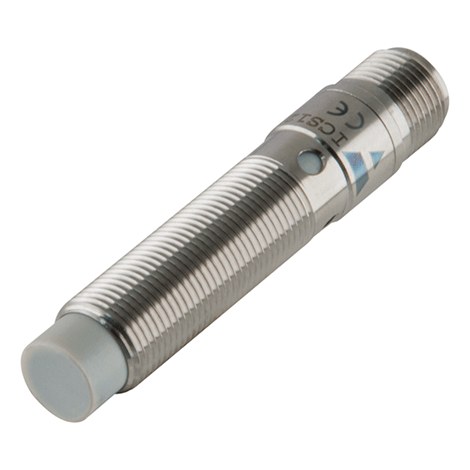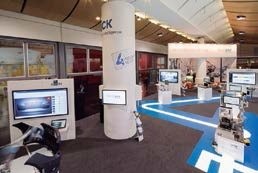In the world of sensors, the inductive principle is not something new. However, today it is still possible to create smart innovations in inductive sensors. In addition to meeting the requirements for maximum precision, availability and immunity to interference, the intelligent ASIC platform enables SICK inductive sensors to be adapted to individual customer needs at short notice, including the development of standard products for specific applications. An example of these products is the SAM sensor, which performs speed or acceleration control.
Together with other physical operating principles from SICK, inductive proximity sensors provide intelligent, comprehensive solutions for a wide range of industrial automation tasks. They can, for example, detect metallic objects within high-frequency alternating electromagnetic fields without any contact. Their maintenance-free, wear-free starters contain no moving parts, and their high-quality build makes them more durable and reliable. Standardized designs and global stock availability at short notice are further advantages of intelligent inductive sensors from SICK.
SICK-ASIC technology for inductive sensors: “Hidden” high-tech
Unspectacular in their application and quite hidden from view, SICK's inductive sensors go almost unnoticed, bringing their intelligence and innovation into the most confined spaces. The integrated chip ASIC developed by SICK, with its miniaturized platform technology, achieves higher precision and reliability than discretely mounted inductive sensors.
Technology expertise for sensor functions in the most confined spaces
To keep the number of external components to a minimum, numerous features have been implemented on the chip that are very difficult to integrate into a conventional design. These include the universal programmable sensor on the front, high-resolution signal evaluation, and digital multi-bit processing for improved immunity to electromagnetic interference. Other important functions are digital programming of sensor parameters such as switching point or hysteresis, non-volatile storage of parameters in an E²PROM, and an output stage with integrated short-circuit and overload protection.
Perfect precision and reliability
Tight production tolerances are one of the reasons that allow inductive sensors with SICK-ASIC technology to provide higher accuracy than discretely mounted standard devices. These tolerances are usually set manually during the production process with the potentiometer or using a laser. Their values may vary with injected sensors. On the other hand, inductive sensors such as those in the IME product family are digitally adjusted at the end of the production process. Value saving in SICK-ASIC technology guarantees extremely precise switching points and very high value repeatability over any number of production cycles. In addition, the number of sensor components has been considerably reduced. As a result, the risk of device failure is lower; in other words, it increases the reliability of the sensors and the availability of the machines.
Inductive detection with SICK
Another advantage of SICK's ASIC technology is the option of using a modular kit system like the one featured in the IME product family. High efficiency and flexibility in production have been achieved, which translates into high availability and shorter delivery times. Basic versions can be quickly tailored and delivered to meet even specific requirements related to housing, length, connection cable material or connector technology, for example. A global production and supplier network complete the production concept. For customers this means a highly reliable supply anywhere in the world, with short and fast delivery routes. SICK's IQ product families combine several features that show the care with which these sensors were designed and further developed. This process begins with the selection of the housing material and continues with the design of the electronics and the special manufacturing process, and even includes aspects such as ease of assembly and use. The IQ sensor housings are made of VISTAL®, a high-quality material resistant to mechanical, chemical and thermal stress. Due to the one-piece housing construction with its integrated plug, the thread is also a specific component of the IP 67 housing and cannot be broken, unlike plastic housings with separate metal threads. In the end, it all adds up to a very safe mount.
To prevent moisture buildup caused by heat inside the housing and to protect the electronics against shock and vibration, the IQ product families have painted electronics and contact pins inside the inductive proximity sensor. with a special elastic compound before ultrasonically welding the casing. This wax-like cast molding compound provides a reliable seal for electronics, adapts to changes in temperature, and also mechanically protects devices by damping shock and vibration, unlike normal hardening molding compounds. they can't do Thanks to this type of sealing and damping of the sensors, SICK provides them with a long functional life.
Intelligence is the basis of innovative products
The inductive speed and acceleration monitoring system, SAM is capable of counting pulses and detecting changes in speed or acceleration; to date, a unique combination on the market. Based on the ASIC technology developed by SICK for its inductive sensors, the SAM is able to detect critical process states such as slippage, belt wear, faults and overloads extremely quickly and reliably. Designed for speeds from 6 to 12 pulses per minute (twice that of most conventional devices) and for negative accelerations from 000 to 0,1 pulses per second², this is an effective and economical monitoring solution. even in the fastest processes. Switching distances of up to 2 mm are possible thanks to flush installation. The configuration, by computer, is precise and easy. SAM sensors provide up-to-date measurement data directly as stand-alone switching devices or integrated into an IO-Link environment. By themselves, they support the continuous monitoring of machines and facilitate an immediate response in case of failure. The fundamental difference between SAM sensors and conventional devices on the market is that they support acceleration monitoring in the form of independent monitoring of the speed of a machine axis. The most important advantage of this is that compared to conventional pulse monitoring, changes can be detected by monitoring a positive or negative acceleration in real time (until limit values are reached, for example). These seconds are often invaluable, allowing immediate reporting of faults such as slipping or overloading in a power train, wear on a web, belt or film, or a broken shaft. Furthermore, if there are changes in the speed of the machine due to a format change, it is not necessary to adapt the limit values. Smart start-up monitoring also ensures automatic removal of delays during machine start-up until running speed is reached. The SAM pulse and acceleration monitoring system, integrated into intelligent automation concepts as an IO-Link version, uses its intrinsic sensor functions to monitor the current machine status and the quality of the ongoing process in real time, e.g. example, and also supports parameter transfer from the machine controller, full visualization and remote diagnostics, all to maximize system productivity.
More intelligence from inductive sensors
SAM is just one example of how SICK delivers products to meet the needs of specific applications or customers on a standard sensor ASIC technology platform. The platform opens up an infinite number of additional opportunities for effective solutions to each client's specific requirements.
The right solution for every application, not just inductive
We have been pioneers in the field of optoelectronics for decades and are today the global market and technology leader in many areas of industrial sensors. Now, SICK AG in Waldkirch has in recent years transferred its sensor knowledge from optoelectronics to the specialized field of inductive proximity sensors, which has created a very comprehensive product portfolio.
Various models and product families of inductive sensors are available. The inductive starter portfolio offers alternative solutions for various environmental conditions, diversity of sensing ranges, numerous installation scenarios, and variable switching outputs and supplies, with industry-specific solutions or individual automation tasks, all from a single source. . If, in a specific case, the use of a different physical principle (optoelectronic, capacitive or ultrasonic) is more suitable, there are suitable alternatives that are electrically and mechanically compatible.



